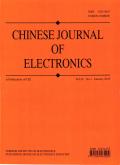认证加密密码ACORN-Like的线性伪造攻击
IF 3
4区 计算机科学
Q3 ENGINEERING, ELECTRICAL & ELECTRONIC
引用次数: 0
摘要
经过身份验证的加密流密码ACORN是经过身份验证的加密:安全性、适用性和健壮性竞赛(CAESAR)的决赛选手之一,旨在用于轻量级应用程序。由于ACORN的状态更新函数存在结构上的缺陷,我们可以引入线性函数来分析状态碰撞的条件和差分轨迹,提出了一种已知密钥和初始化向量或已知某一时刻寄存器状态的线性构造伪造消息的方法。该攻击方法适用于三个版本的ACORN,也可以扩展到任何类ACORN,其中线性反馈移位寄存器(LFSR)可以用其他LFSR代替,反馈函数可以用其他非线性函数代替。对于连续$l(l >;293)$比特的新输入数据,我们可以构造$2^{l-294}$伪造消息对于任意给定的ACORN消息。使用标准的个人计算机,几乎可以立即构建具体的伪造消息,所需的中央处理单元时间和内存相当于在二进制域上求解293个线性方程系统所需的资源。本文的这些攻击使得发送方和接收方很容易互相欺骗,这并不是一个理想的密码所希望具有的特性,也使人们对ACORN的必要认证安全要求产生了怀疑。本文章由计算机程序翻译,如有差异,请以英文原文为准。
Linear Forgery Attacks on the Authenticated Encryption Cipher ACORN-Like
The authenticated encryption stream cipher ACORN is one of the finalists of the Competition for Authenticated Encryption: Security, Applicability, and Robustness (CAESAR) and is intended for lightweight applications. Because of structural weaknesses in the state update function of ACORN, we can introduce a linear function to analyze conditions and differential trails of the state collision and present a linear method to construct forgery messages under the condition that the key and initialization vector are known or the register state at a certain time is known. The attack method is suitable for three versions of ACORN and may be also extended to any ACORN-like, of which the linear feedback shift register (LFSR) can be replaced by other LFSRs and the feedback function can be replaced by other nonlinear functions. For continuous $l(l > 293)$ bits of new input data, we can construct $2^{l-294}$ forgery messages for any given message of ACORN. Using a standard personal computer, a concrete forgery message can be constructed almost instantly and the required central processing unit time and memory are equivalent to the required resources for solving a system of 293 linear equations over the binary field. These attacks in this paper make that the sender and receiver may easily cheat each other, which is not a desirable property for an ideal cipher and casts some doubt on the necessary authentication security requirements of ACORN.
求助全文
通过发布文献求助,成功后即可免费获取论文全文。
去求助
来源期刊

Chinese Journal of Electronics
工程技术-工程:电子与电气
CiteScore
3.70
自引率
16.70%
发文量
342
审稿时长
12.0 months
期刊介绍:
CJE focuses on the emerging fields of electronics, publishing innovative and transformative research papers. Most of the papers published in CJE are from universities and research institutes, presenting their innovative research results. Both theoretical and practical contributions are encouraged, and original research papers reporting novel solutions to the hot topics in electronics are strongly recommended.
 求助内容:
求助内容: 应助结果提醒方式:
应助结果提醒方式:


